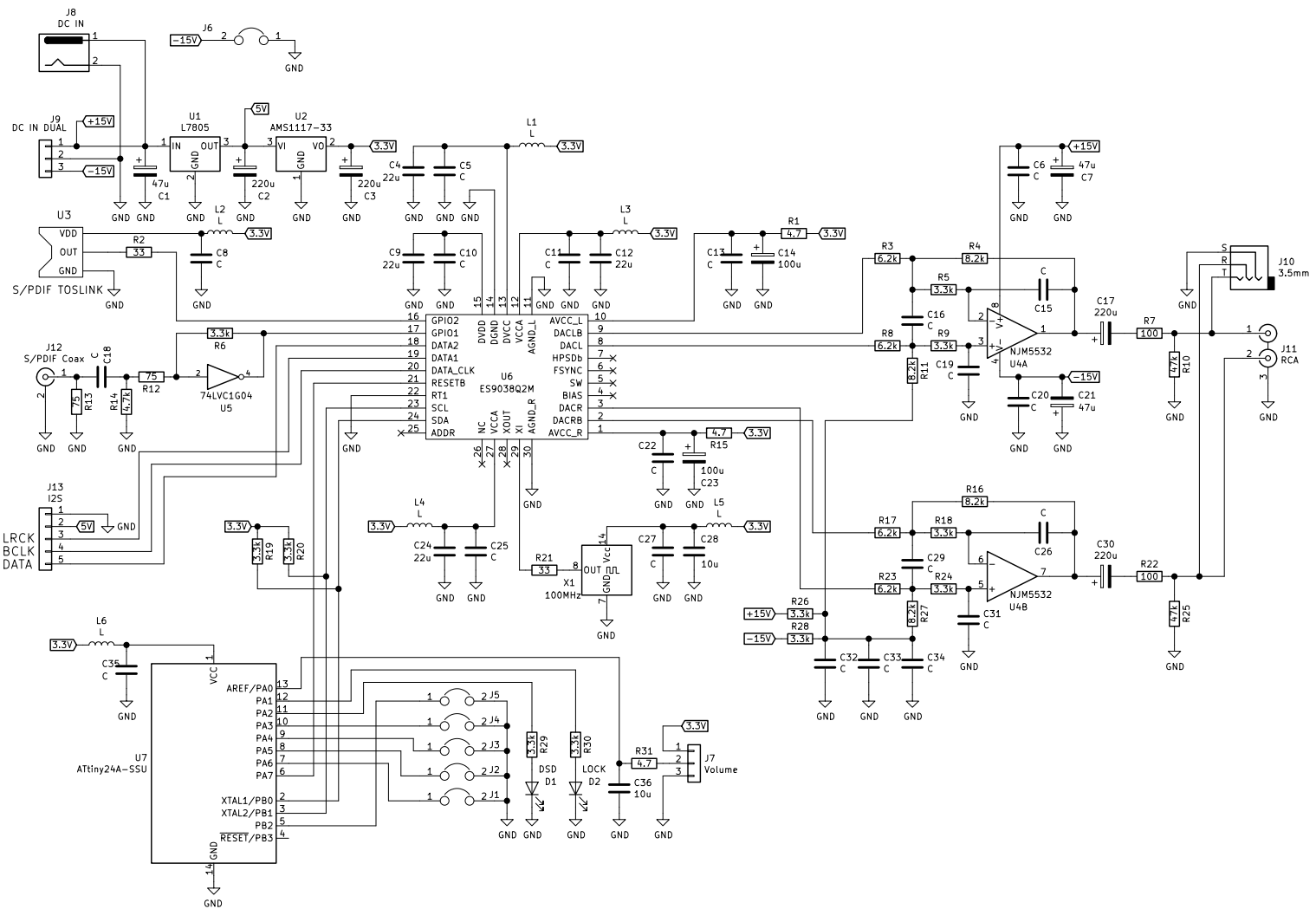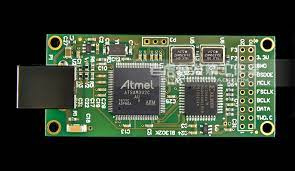Answer the question
In order to leave comments, you need to log in
Why don't Chinese-made dacs sound?
Greetings! I bought a Chinese board - a DAC on the ES9038Q2M chip. I found the circuit on the Internet, and decided to try to finish it so that it sounds better. A friend has an Apogee DAC, on the same chip, he was taken as a standard, because. it's all done in the mind.

First of all, I broke the connection between the output of the DAC and the amplifier, and connected the DAC to the input of an external headphone amplifier. From this, the sound became much better, but to the level of branded expensive dacs, on the same chip, he was like the moon.
After reading the forums, I concluded that power is very important for DACs, and decided to make it completely audiophile, namely five 3.3 volt stabilizers, so that the analog, digital, microcontroller and crystal oscillator are powered separately, each from its own stabilizer. And all this was powered by a car battery. All electrolytes for nutrition increased to 1000 microfarads.
From this refinement, the result is generally zero. Maybe this will give an effect on measuring instruments, because everything was powered from one stabilizer, but nothing at all by ear.
For comparison, Apogee on the same chip sounds much cooler. Both devices were connected to an ear amplifier and listened to with headphones. The difference between them is space.
We dismantled Apogee to see what they conjured up there to make it sound so cool. We expected to see a bunch of details, a complex scheme, but nothing like that. The question arises, what did they do in an expensive device so that it sounds so good, and how can this be repeated on this Chinese?
Could it be that the chip itself is not original, or is it a reject? I am led to this idea by the price of the chip, which on the Mauser is a little cheaper than the entire Chinese board as a whole.
The option with food disappears, and I don’t know what else can be done.
I am more or less friends with analog technology, but in digital it’s a complete zero.

And this is what the board itself looks like. Connected to a computer via USB.
USB to I2S converter on separate Amanero board

PS Besides this chip, I have two more boards, PCM5102 and ES9018K2M, and they all sound equally bad.
No matter what chip the Chinese have assembled - it turns out about the same bad sound.
And normal firms are sawing great-sounding devices on these chips.
So what to do? Well, it’s not Chinese karma on them!
Answer the question
In order to leave comments, you need to log in
The difference between them is space.Yes, is it? ES9038Q2M is a mobile version of the ES9038 chip, which is successfully installed in expensive branded DAC models. The mobile version is certainly cut down, but not too much. The quality of analogizing depends on the body kit, of course, but again, not too much, and you changed the capacitors. I would say that a headphone amplifier makes a much bigger difference, its quality can be assessed / heard objectively, in a blind test. The subtle shortcomings of the DAC, it seems to me, can only be caught on very good bitperfect recordings in a very decent (in general) audio path with very good headphones and musical ears. Could it be that this is subjective? After all, the sound is generally very subjective ...
Download the datasheet for ES9038Q2M and read it.
There's a mountain of programmable options inside, including non-linear distortion compensation, filters, slews, and more.
As for the power supply, it is recommended that the analog and digital parts be powered separately. You will not hear it with your ears, but there will be less distortion in the signal.
Since the DAC requires a rated impedance, you should make sure that the output of the DAC is matched to the input of the VLF. Take the sabre9602 and toss it out. They seem to work together.
Well, the last point - the Chinese DAC can be very different from the original. Buy the original from a normal supplier (Digikey, Mouser). If the swap shows the difference, then the answer is obvious.
To determine the role of the DSP in Apogee, as mentioned above, try to feed the i2s stream from the input of the Apogee DAC chip to the j13 Chinese.
I think, first of all, because a greatly simplified analog part of the circuit is used here. In the classic version, with an unbalanced RCA output, 3 op-amps are required for each channel: two for the current-voltage converter (after which we get a balanced differential output), and one for building a diff. amplifier that converts it to an unbalanced output. Here they managed one, and one of the cheapest. For the same reason, the signal at the outputs of the op-amp has a constant component, which is why it was necessary to use electrolytic capacitors C17 and C30 in the audio path. In addition, the Chinese prefer not to bother and always use the maximum clock frequency of 100 MHz for ES90x8 in combination with the maximum DVCC=3.3V, which creates conditions for overheating of the crystal, since the current consumed by the digital part is also maximum, and it is powered by the voltage DVDD=1.2V generated by the internal stabilizer from the DVCC (that is, 3.3-1.2=2.2V, multiplied by the current consumption, is used to heat up the crystal) . One more thing - does the above diagram match the board? They have a different number of buttons and LEDs. In addition, I see a jumper on the board in the Single Power position, which is not on the diagram. If there is really unipolar nutrition, it is even sadder. missing from the diagram. If there is really unipolar nutrition, it is even sadder. missing from the diagram. If there is really unipolar nutrition, it is even sadder.
Hello). And such a question (amateurish): if we replace the electrolytes C17 and C30 with a film, then what denomination should be set? And how much will it improve the sound quality? OU 5532 for replacement, of course))
Didn't find what you were looking for?
Ask your questionAsk a Question
731 491 924 answers to any question